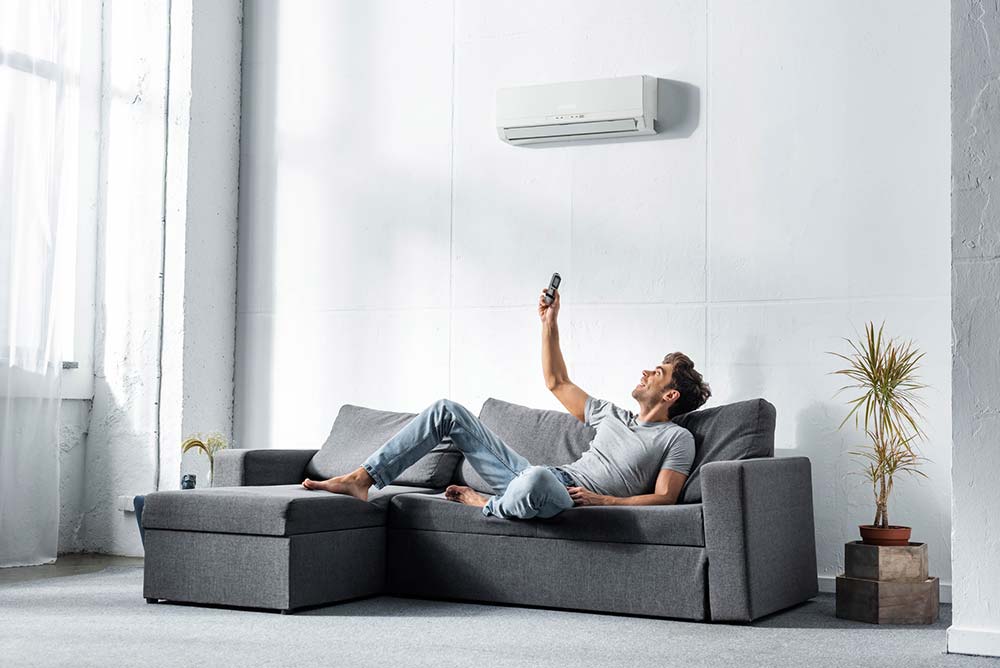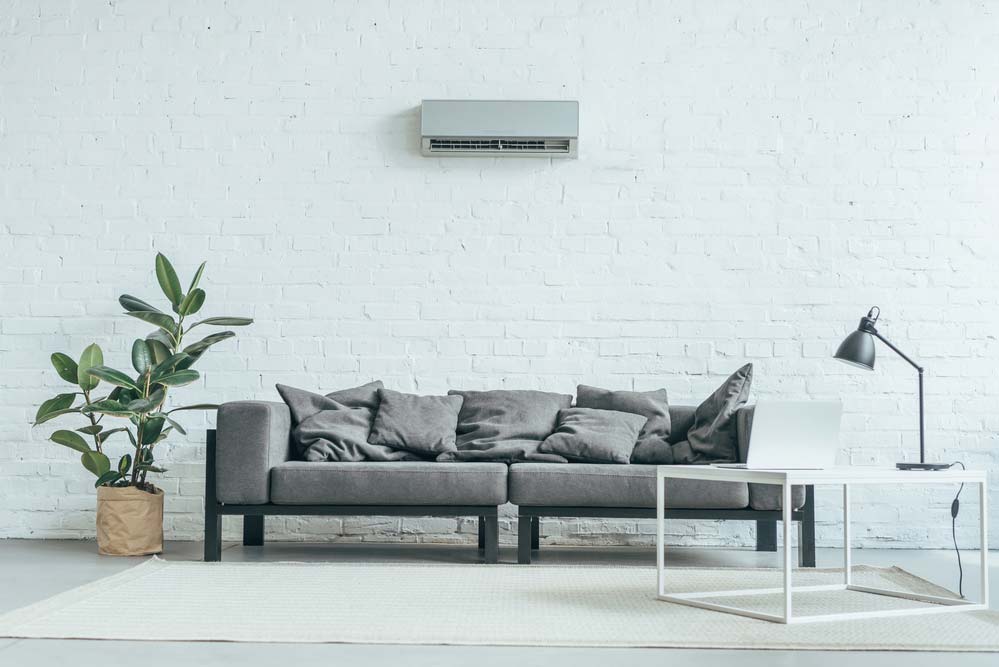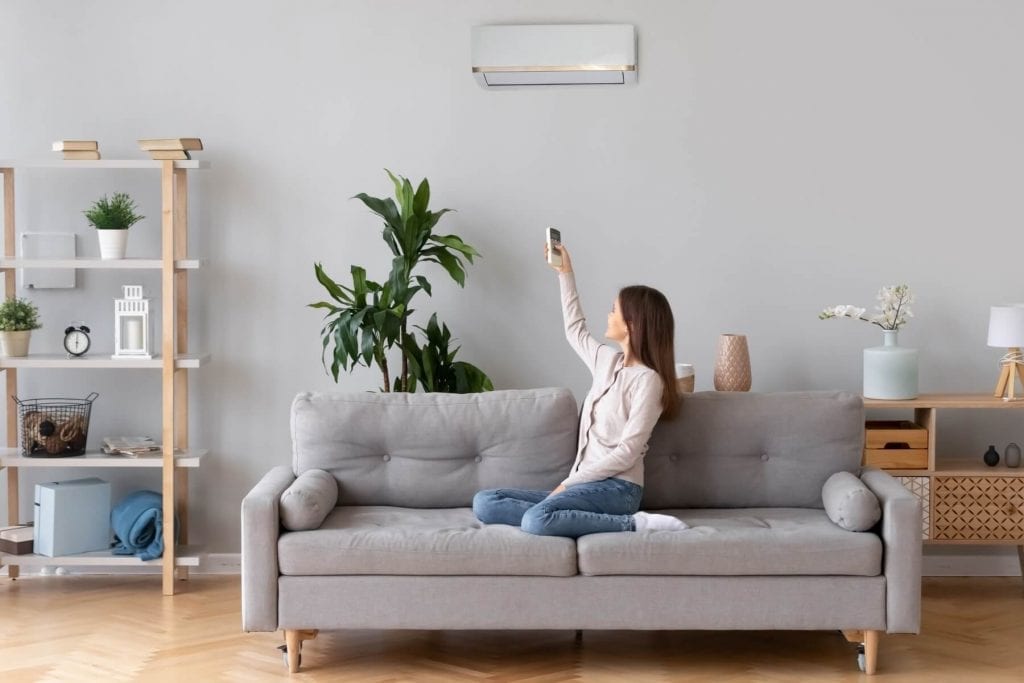An increasing number of homes across Victoria are adopting cooling systems for residential use, even though air conditioning and cooling has been traditionally seen as a commercial fitting or a more luxury consideration. However, modern residential cooling has become more cost-effective to set up as well as to run, so in areas of heat and high humidity, cooling down is not just a matter of comfort, but it can also be crucial to maintaining good health.
If you live in a climate where the temperatures often skyrocket, it is well worth considering installing a cooling system in your home. You may even wish to set up a cooling system if you need to reduce the humidity in your home, for comfort or health reasons.
Once you have realised the need for home cooling, it is a good idea to consider learning more about what the different systems are, and why they might benefit you. In this guide, we will look at the basics of air conditioning, as well as which options are likely to suit your home and your needs the most.

At its most basic, an air conditioning system, conditions or treats the air to improve the comfort for the room’s occupants. However, the term ‘air conditioning’ can get quite confusing. That is because it is used to describe several different methods of controlling air comfort and temperature.
Air conditioning as a concept revolves around the regulation of air quality, air temperature and humidity. All three elements can impact on everyday comfort and health. Too much humidity in a space can result in the growth of damp and mould and can also aggravate certain health conditions. However, in some cases, increasing humidity may help to alleviate specific health symptoms so it’s important to know which system will be best in certain situations.
For many people, air conditioning and cooling is a safer, more convenient way of cooling a space without opening doors and windows. Thanks to these systems becoming more cost-effective and accessible, more homes are adopting the technology in light of rising temperatures and humidity across Victoria.
Air conditioning and cooling carry multiple benefits. Studies in educational and commercial workplaces show that poor air quality can negatively impact productivity and efficiency. In the home environment, where we are supposed to be able to relax and unwind, poor quality air could aggravate breathing problems and related health conditions.
The best quality air cooling and conditioning systems will not only lower temperatures and humidity levels in a room but will work to reduce dust and airborne bacteria. Poor quality conditioning, meanwhile, will purely recirculate air. Therefore, top quality air conditioning systems and support are crucial.
Moreover, air conditioning and cooling are much safer than leaving windows and doors open. For example, homeowners will feel more secure, leaving AC systems to circulate when leaving home.
There are a few types of cooling system you can set up in your home. These can generally fall under reverse cycle, evaporative and split systems. Let’s take a look at these in a little more detail.
Poor ventilation in homes and other buildings could lead to breathing difficulties, an increase in concerns from existing allergies, skin problems and more. Data also suggests that around a fifth of asthma conditions are exacerbated by poor indoor air quality.
Another benefit of installing air conditioning and cooling lies in the ability to prevent devices and technology from overheating. Whilst this is less important to consider for residential properties, it is an extremely important consideration in some commercial environments, data rooms and centres needing high-quality air cooling for safe operation.
Refrigerated reverse cycle systems can heat or cool your home, depending on the mode selected. In the simplest fashion, they act much like a cars radiator, where the air rushing across the radiator fins cools the engine coolant down, that is then pumped around the engine to keep it cool.
In a refrigerated air conditioning system, the job of the coolant is done by refrigeration gas which as it expands in the indoor unit coil becomes very cold. Air from inside the room is then blown across this freezing coil of the indoor unit and heat is extracted from the air, cooling the air that is then recirculated around the room. The hot gas then flows to the outdoor unit, which uses large fans to cool the gas and compress it back to a liquid and expel the heat that was absorbed from the room. This is why the outdoor unit will be blowing out hot air when you are cooling inside.

When they are operated in reverse they draw heat from the external environment and use the gas to transfer it to the inside of the home. In this mode the outdoor unit blows cold air and the indoor unit blows hot air.
Reverse cycle systems are often straightforward to install and run. Current building trends are seeing more home owners selecting reverse cycle air conditioning systems, rather than a dedicated heating system and then a secondary cooling system, as now the systems are far more economical to install and run throughout the whole year and users can simply switch between the required heating or cooling mode.
Refrigerated systems come in many different configurations based around how many rooms they are designed to condition.
What is commonly called a split system (or splitty), is actually a high wall (or wall mounted) fan coil unit, it is connected to a separate outdoor condenser. These units are designed to cool (or heat) a single room or space. Whereas a split ducted system has a much larger fan coil unit that is generally installed up in the roof space, this unit directs area to many rooms or spaces, via a network of ducts and a single large return air duct. Ducted split systems still have a separate outdoor condensing unit, just a bit bigger than that of a split system.
Evaporative cooling systems, are often preferred by homeowners who are looking for a low cost and energy-efficient ways to cool their properties. These roof mounted systems work by cooling air, by using a large fan to draw outside air across water pads, which cools the air and then pushes this air into the house. As you are introducing new air into the home through a network of ducts in the ceiling space, these systems require you to leave doors and windows open, to enable the unit to push the hot stale air out.
Modern evaporative cooling systems are relatively quiet and efficient to run. They also act to continuously bring outside air into the home.
However, in many case they effectiveness is limited due to the fact that they are constantly treating outside air, they add a lot of moisture and humidity into the indoor environment, they bring pollutants from outside into the home and to be effective windows and doors must remain open, to allow air to move out of the home. Whilst this is ideal if you are home whilst the system is running, it may not be the best solution if you are out for a period of time, due to security concerns.

As well as the above systems and standards, you can choose to use an ‘Add-On’ cooling system, which utilises your existing heating ductwork. Add-on cooling is very popular with homes and businesses who already have a lot of the fixtures and fittings in place.
However, there are a few points to consider. With add-on cooling, you will need to make sure you have enough space, and a big enough fan, for your cooling coil. If not, you may need to reinstall your ductwork completely.

The best cooling system for your property will depend on your precise needs for comfort and control. Heating and cooling experts will work to consider your ideal comfort levels and where you wish to adjust your cooling.
For example, in some cases, a multi-split cooling system may be beneficial. That is especially the case if you know some rooms will need more cooling than others. However, you may benefit from a ducted split for the least noise and the most energy efficiency.
It is crucial to ensure you clean and maintain your air cooling and conditioning system. In some cases, you may be able to service your AC once every one to two years. However, it is likely more prudent to check your system prior to the change of seasons. Proper servicing and maintenance is definitely best carried out by the professionals, as they will check that everything is working at its’ peak efficiency, which will ensure both cost-effective use and longevity of your system
Even the most efficient of cooling systems can carry dust, bacteria and spores. Therefore, removing your filters and cleaning them regularly will be beneficial to your everyday health. Crucially, it is vital to set up a maintenance plan with a cooling expert.
Even the most efficient of cooling systems can carry dust, bacteria and spores. Therefore, removing your filters and cleaning them regularly will be beneficial to your everyday health. Crucially, it is vital to set up a maintenance plan with a cooling expert.
Cooling and heating experts will also support you in finding the best cooling system to fit your home. When looking for the ideal AC, you will need to consider everyday comfort, noise levels, budgeting and more besides. Air conditioning may seem to be a complicated topic on the face of things. However, providing you are aware of the basic facts, running and maintaining an AC is easier than you may think.
Increasing heat in Victoria is pushing more homes and families to set up residential AC. So, too, are falling costs. Ideal for cooling homes and businesses alike, it is essential to educate yourself on the types of cooling that could benefit you.
For more information on cooling and heating systems for residential use, make sure to read our further guides. Alternatively, please feel free to reach out to an expert at HeatCool.